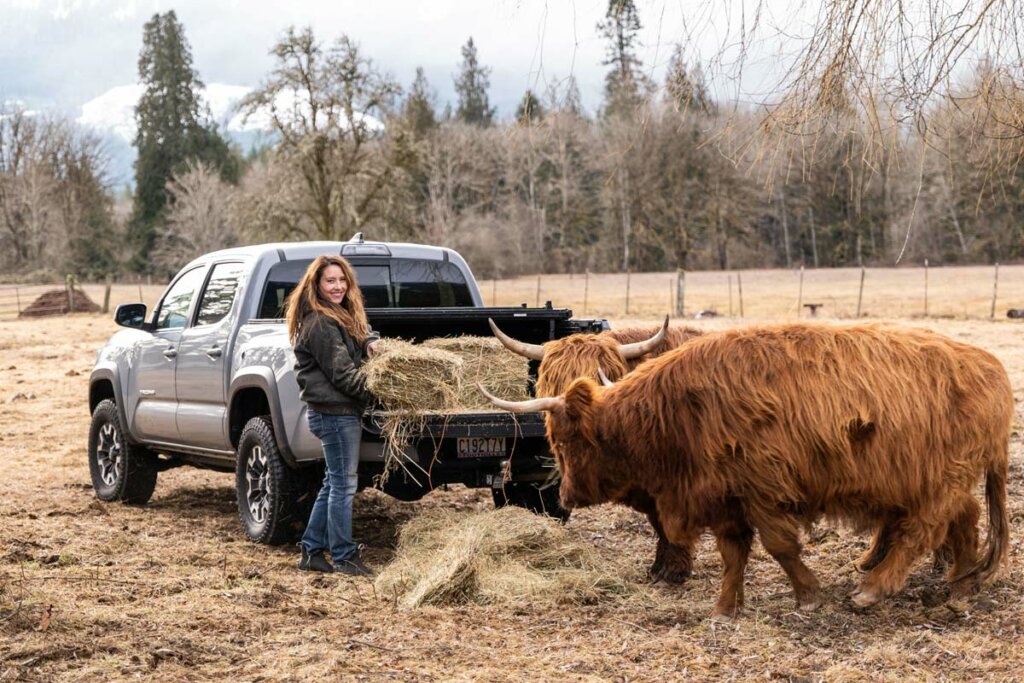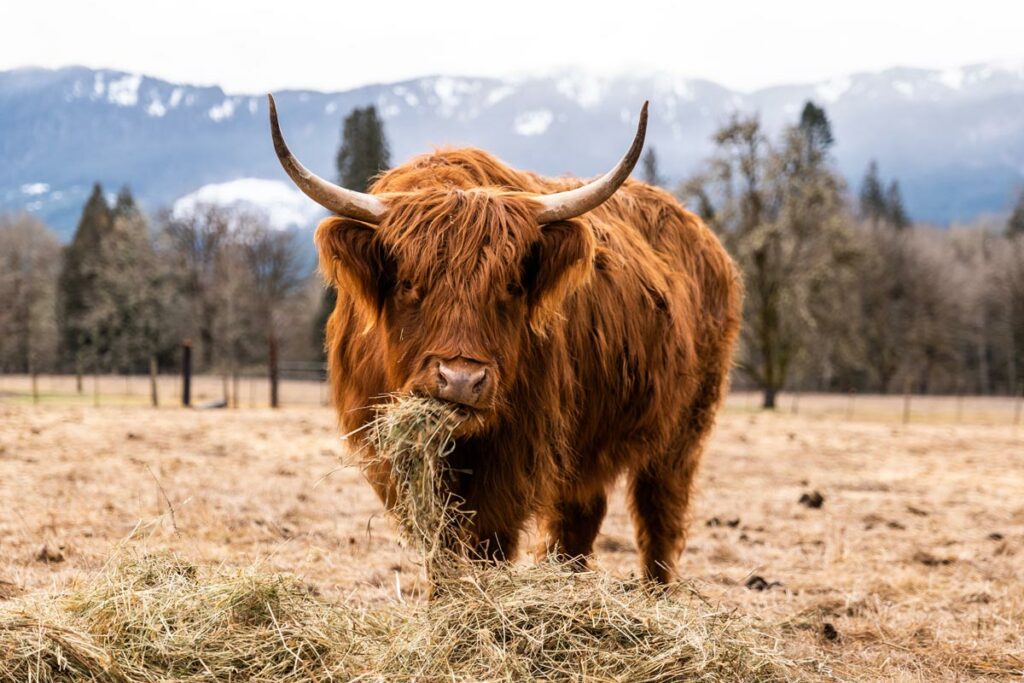There’s a lot that goes on when raising cattle on the homestead. As we’re expanding our herd, we’re learning the ins and outs of how different owning one, nine, or 20+ cattle can be!

As you’ll hear in the podcast, this is my last episode for 2023. But I always want to encourage you to reach out and let me know about topics or tutorials you’re interested in. As I’m planning out the new year, I’m always taking your recommendations into consideration.
In the past, I’ve discussed my tips for raising livestock for food, how to grow your own livestock feed, and pasture rehabilitation, as well as what you need to know on butcher day and the best cuts of meat to get from the butcher. I’ve also shared how we started raising Scottish Highland Cows on the Norris Farmstead, so be sure to check those posts out as well.
This past week, we were running our cattle herd through the system for getting tags (which helps track lineage), castration and overall well-being.
Having a larger operation has meant some changes to these practices. If you’re thinking about raising cattle, I highly recommend you listen to today’s podcast, as I’m sharing some of the differences between owning one, nine or 20+ head of cattle. I also discuss the differences between banding and cut castration and why we switched.
Enjoy this podcast, then be sure to check out some of my other posts below.

Table of Contents[Hide][Show]
Resources
- Azure Standard – If you’re a first-time Azure Standard customer, you can get 10% off your order of $50 or more by using coupon code “Melissa10” at checkout!
- Archer Valley Ranch – At last year’s Modern Homesteading Conference we were able to see the Archer Valley Ranch squeeze chute in action!
More Posts You May Enjoy
- How to Preserve Dairy, Meat & Eggs
- 8 Things You Need to Know about Keeping a Family Milk Cow
- Stocking Up on Animal Feed (Buy Now, Save Later)
- Your Livestock Questions Answered
- How to Make Real Buttermilk (Cultured Buttermilk Recipe)
- Fermented Dairy: Why You Should Be Doing This Now
- How to Make Homemade Yogurt That’s Thick and Creamy
[fusebox_transcript]



